How Marine Animals Are Playing a Vital Role in Saving Our Planet
Earth Day is an annual celebration of the natural world and how it sustains life for all beings on the planet. This April 22, we’d like to focus on marine animals that serve as climate heroes, helping to keep the entire planet healthy and in balance.
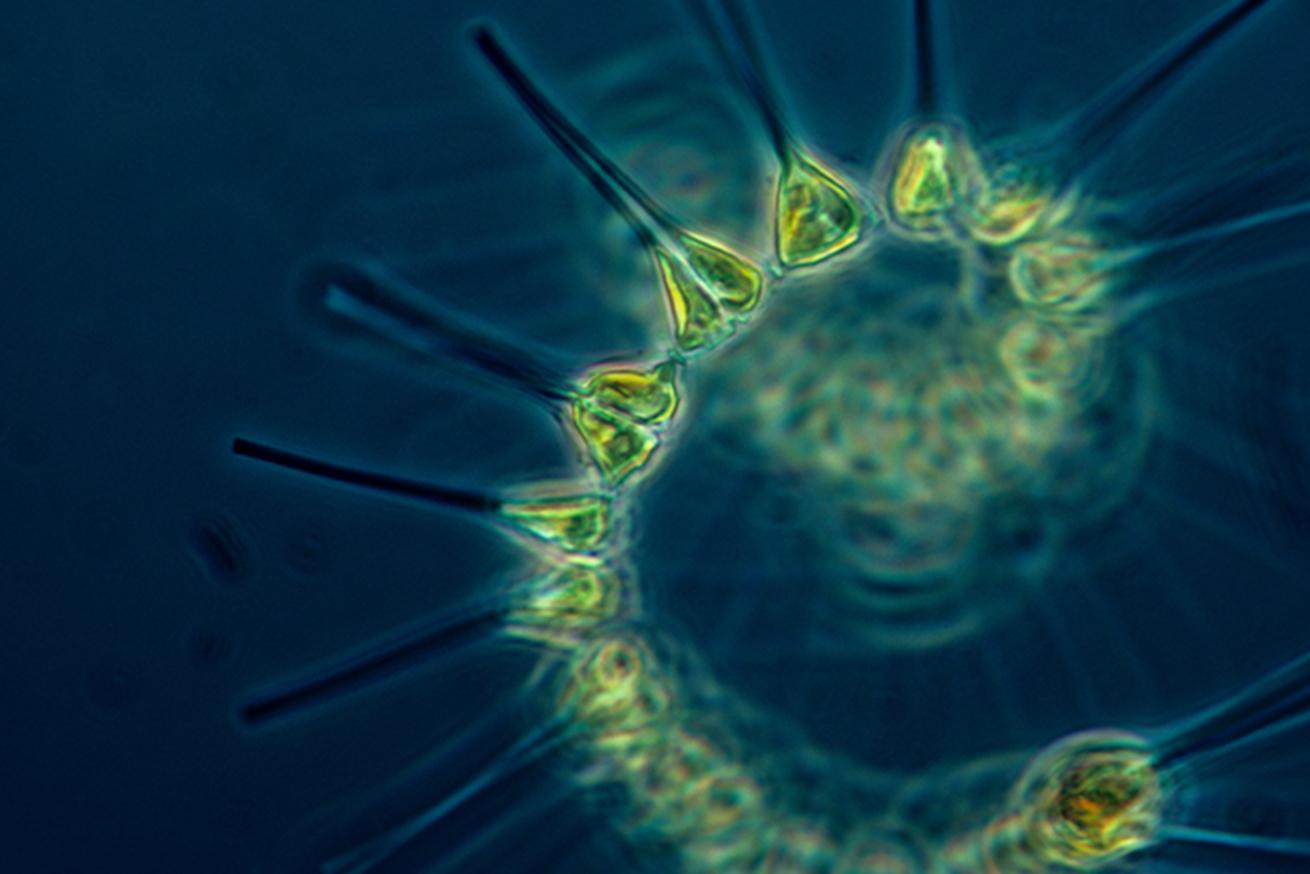
Shutterstock.com/lego 19861111Though small in size, plankton play a vital role as the workforce of the ocean, serving as the foundation of the marine food chain.
Phytoplankton – “Every Other Breath”
The ocean is responsible for every other breath we take. That’s largely because of phytoplankton: drifting plants, algae and some bacteria that can photosynthesize. These microscopic creatures take in carbon dioxide from the atmosphere and produce oxygen. How much? – NOAA estimates that roughly half of the Earth’s oxygen has come from the ocean, with the majority from oceanic plankton. Plankton serve as the foundation of the oceanic food chain and keep our planet’s climate in balance.
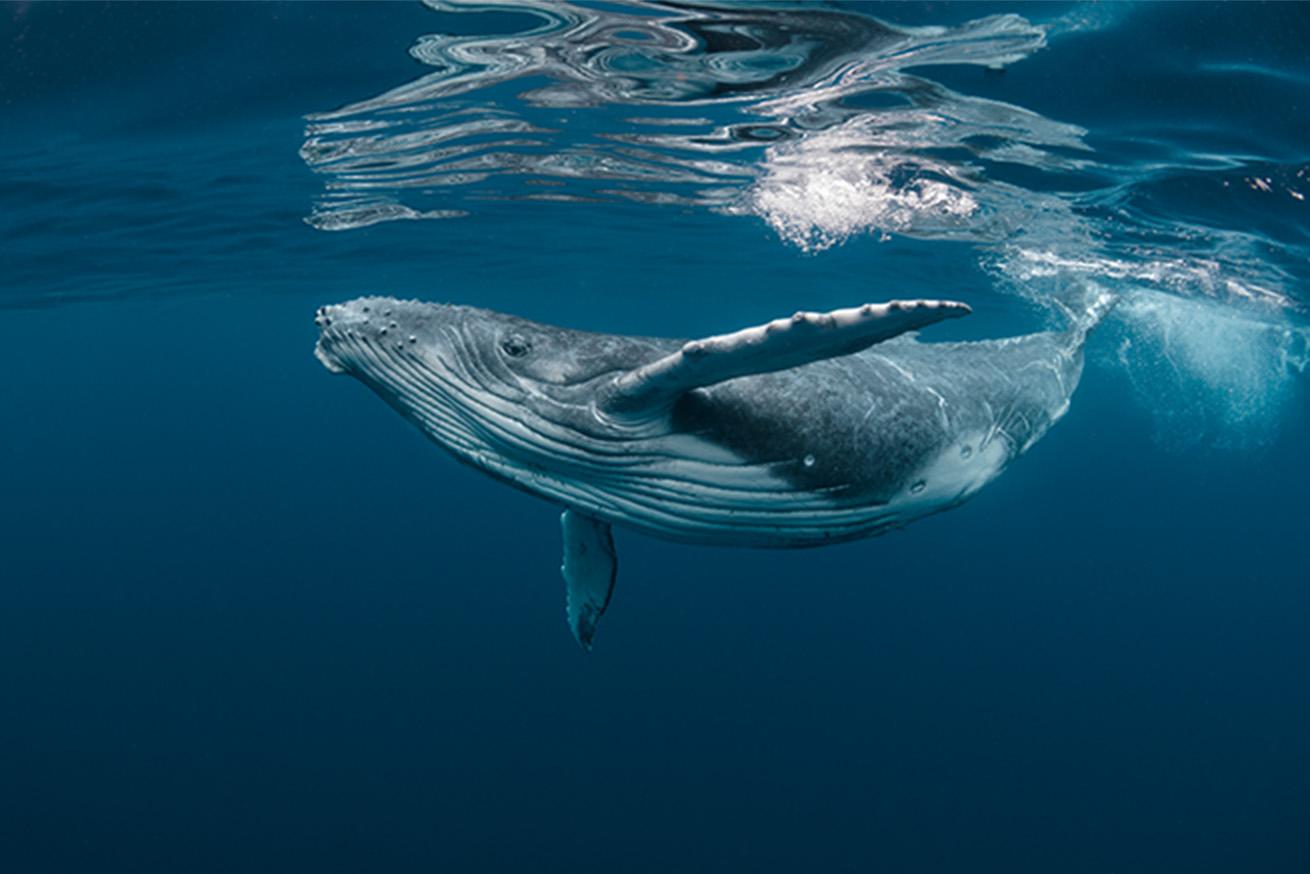
Shutterstock.com/Craig Lambert PhotographyWhales serve as ocean climate heroes in multiple ways.
Whales – The “Whale Pump”
Whales help the ocean and the climate in two ways. First, they help just by being whales and doing whale things! They feed in the deep then return to the surface to breathe and poop. Their “fecal plumes” bring nitrogen and iron to the surface, which fertilize phytoplankton and make them more productive. We learned above why this is awesome. Scientists call this the “whale pump,” and it’s also responsible for enhancing fisheries, Science Daily reported. Secondly, whales are huge. As the ocean’s largest citizens, they eat a ton of organic matter (carbon), which gets converted into body mass. When they die, whales sink to the ocean floor, and all the carbon stored in their tissues gets transferred to the deep, where it remains – sequestered for centuries.
A 2010 study found that when whale carcasses are processed on land rather than allowed to sink to the seabed, carbon is released into the atmosphere, BBC reported. Because of this, over the 20th Century, whaling added roughly 70 million tonnes of carbon dioxide into the atmosphere. In contrast, saving whales now helps to reverse that.
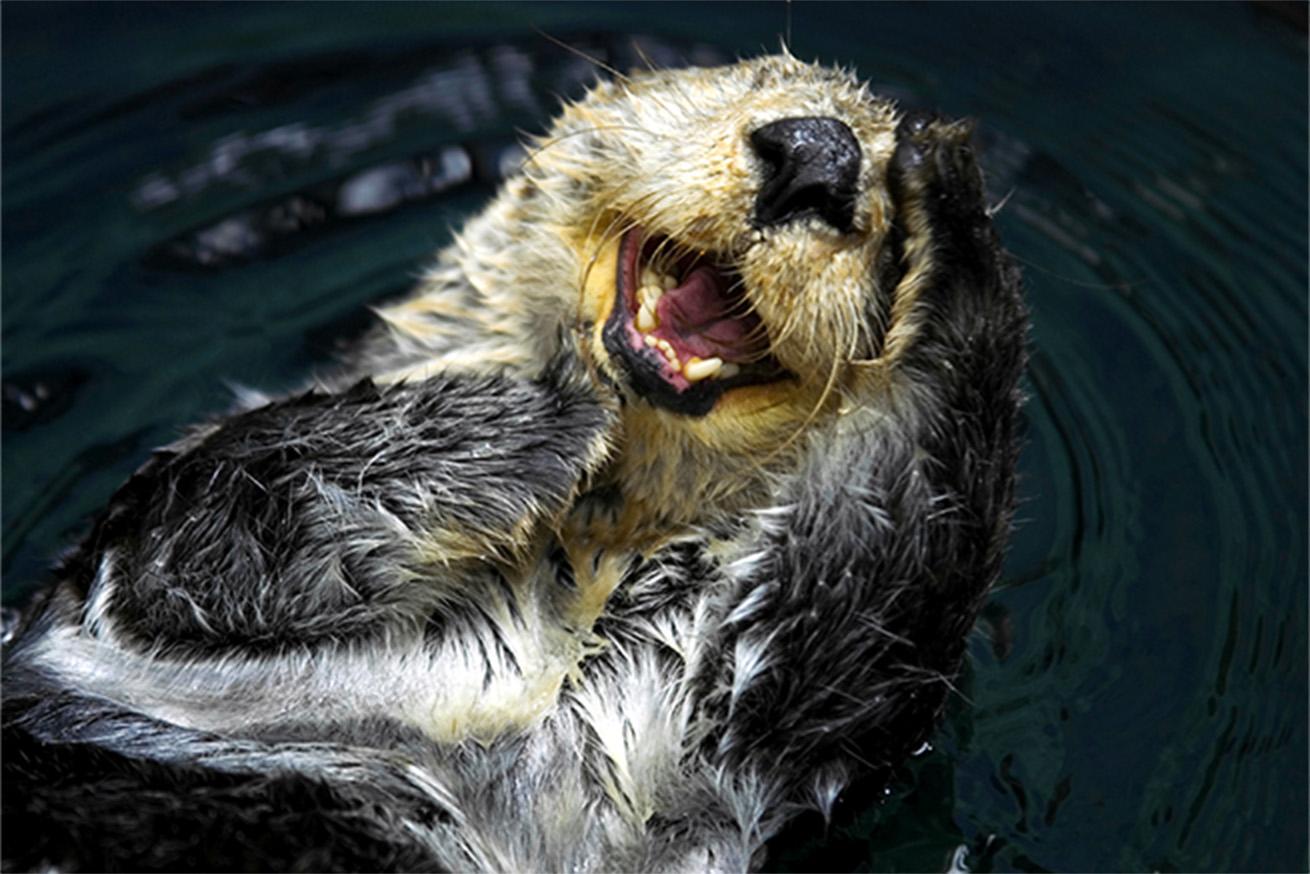
Shutterstock.com/OnlyFabrizioSea otters are keystone species: without them, kelp forests become unstable and barren.
Otters – The “Sea Otter Effect”
Sea otters are beloved for their cuddly and playful demeanor in the North Pacific. They’re also keystone species: without them, kelp forests become unstable and barren. Because kelp forests are critical blue carbon ecosystems, the loss of these plants harms the entire planet. BBC reported on this “sea otter effect” and how indispensable these marine mustelids are for kelp forests – and, therefore, the climate. Sea otters have very little blubber; so, they eat constantly to keep up their energy and warmth. Their favorite foods are sea urchins, and they eat so many that they keep the invertebrates’ population in check. Without otters, urchin populations spike, and the herbivores mow down kelp. Other animals that rely on kelp for habitat and food are left scrounging, and the planet has fewer plants to help sequester carbon.
Otters also eat crabs. In seagrass ecosystems, the lack of crabs allows snails and slugs to proliferate. These don’t eat the seagrass, instead scraping off the algae that grows on this. Consequently, seagrass can absorb more sunlight and grow more efficiently, BBC reported. “It essentially protects the seagrass.”
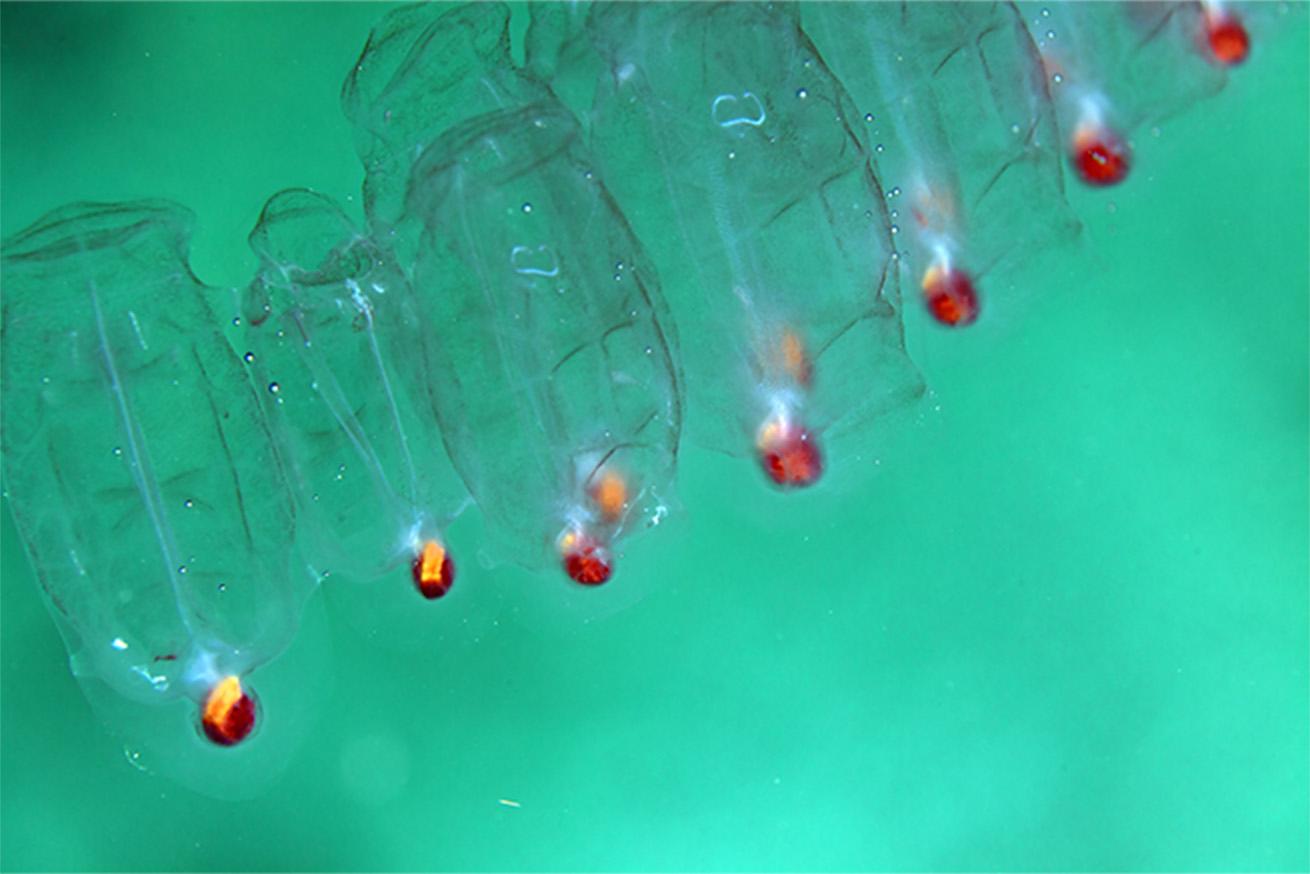
Shutterstock.com/StephanKerkhofSalps are powerhouses in curbing climate change.
Salps – “Powerhouses in Curbing Climate Change”
These jelly-like creatures rise to the sea surface at night to suck up and eat phytoplankton – which, as we learned, take in carbon dioxide to photosynthesize. During the day, salps sink deeper in the sea – possibly to avoid predators. There, they poop in the deep, and their carbon-rich pellets sink rapidly – sequestering that carbon on the seafloor. This makes them “powerhouses in curbing climate change,” The Guardian reported. In fact, salp pellets sink up to 1,000 meters a day, faster than the pellets of most other sea creatures.
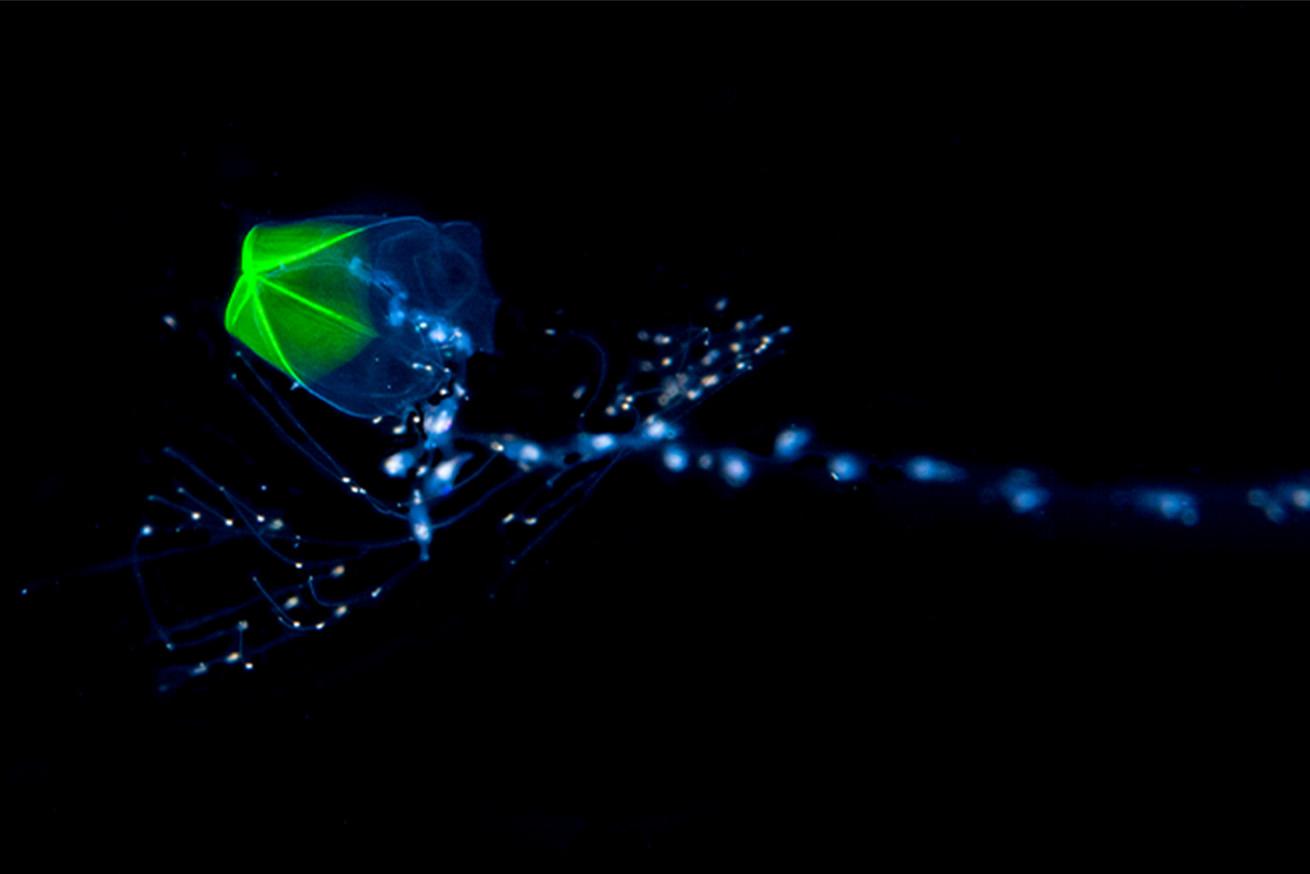
Shutterstock.com/SuzanMeldonianSiphonophores are a crucial agent of carbon removal.
Siphonophores – A “Crucial Agent of Carbon Removal”
This tiny creature, which lives in the twilight zone of the sea, was called a “crucial agent of carbon removal,” The New York Times reported. Similar to salps, siphonophores come to the surface at night from the dark zone they live in to eat carbon-rich phytoplankton. They also go down when the sun comes up to hide from predators, excreting carbon into the deep. “The carbon pump that we’re talking about is tremendously important,” Oceanographic Institution’s Peter de Menocal told The Times. “If this disappeared, the atmospheric carbon dioxide would go up more than 50 percent. These organisms make the earth habitable.”










